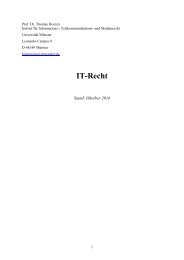3d4yVkKMl
3d4yVkKMl
3d4yVkKMl
You also want an ePaper? Increase the reach of your titles
YUMPU automatically turns print PDFs into web optimized ePapers that Google loves.
- 56 -<br />
188. The evidence shows that the JARPA II Research Plan lacks transparency in the reasons<br />
for selecting particular sample sizes for individual research items. This is a matter on which the<br />
experts called by the two Parties agreed, as described above (see paragraphs 158-159). With the<br />
exception of one variable (discussed in the next paragraph), the JARPA II Research Plan provides<br />
very limited information regarding the selection of a particular value for a given variable. For<br />
example, in the Court’s view, there is no consistent effort to explain why, for the various research<br />
items relating to the monitoring of biological parameters, JARPA II is designed to detect one<br />
particular rate or degree of change over another that would result in a lower sample size. These<br />
shortcomings of the JARPA II Research Plan have particular prominence in light of the fact that the<br />
particular choices of rate and degree of change consistently lead to a sample size of approximately<br />
850 minke whales per year.<br />
189. An exception to this pattern is arguably the discussion of the sample size applicable to<br />
the study of the age at sexual maturity of minke whales, as to which the JARPA II Research Plan<br />
furnishes some details about the factors that Japan considered in selecting the particular rate of<br />
change to detect. For this research item, the Research Plan also offers an indication of the<br />
relationship between the data sought and the first two JARPA II research objectives. The Court<br />
finds no comparable reasoning given as to the five other research items that were expressly used to<br />
set the overall sample size of 850 whales (i.e., those research items set forth in Figure 5-4 from<br />
Japan’s Counter-Memorial above). This highlights the absence of evidence, at least in the<br />
JARPA II Research Plan, that could support a finding that the sample size for the lethal take of<br />
minke whales, a key component of the design of JARPA II, is reasonable in relation to achieving<br />
the programme’s objectives.<br />
190. The Court also recalls that one of the experts called by Australia, Mr. Mangel, asserted<br />
that nearly the same level of accuracy that JARPA II seeks could be obtained with a smaller lethal<br />
take of minke whales and further posited that a smaller take and higher margin of error might be<br />
acceptable, depending on the hypothesis under study. Japan did not refute this expert opinion.<br />
191. The Court turns next to the evidence regarding Japan’s decision to use a six-year period<br />
to calculate the sample sizes for research items corresponding to minke whales, rather than a<br />
12-year period as was used for fin and humpback whales. That decision has a considerable effect<br />
on sample size because the shorter time-period generally requires a higher figure, as the JARPA II<br />
Research Plan demonstrates (see paragraph 165 above).<br />
192. Japan, in discussing one research item (age at sexual maturity) in the<br />
Counter-Memorial, attributes the use of a six-year period to the need to obtain at least three data<br />
points from each JARPA II research area (since whales are taken from each area in alternating



